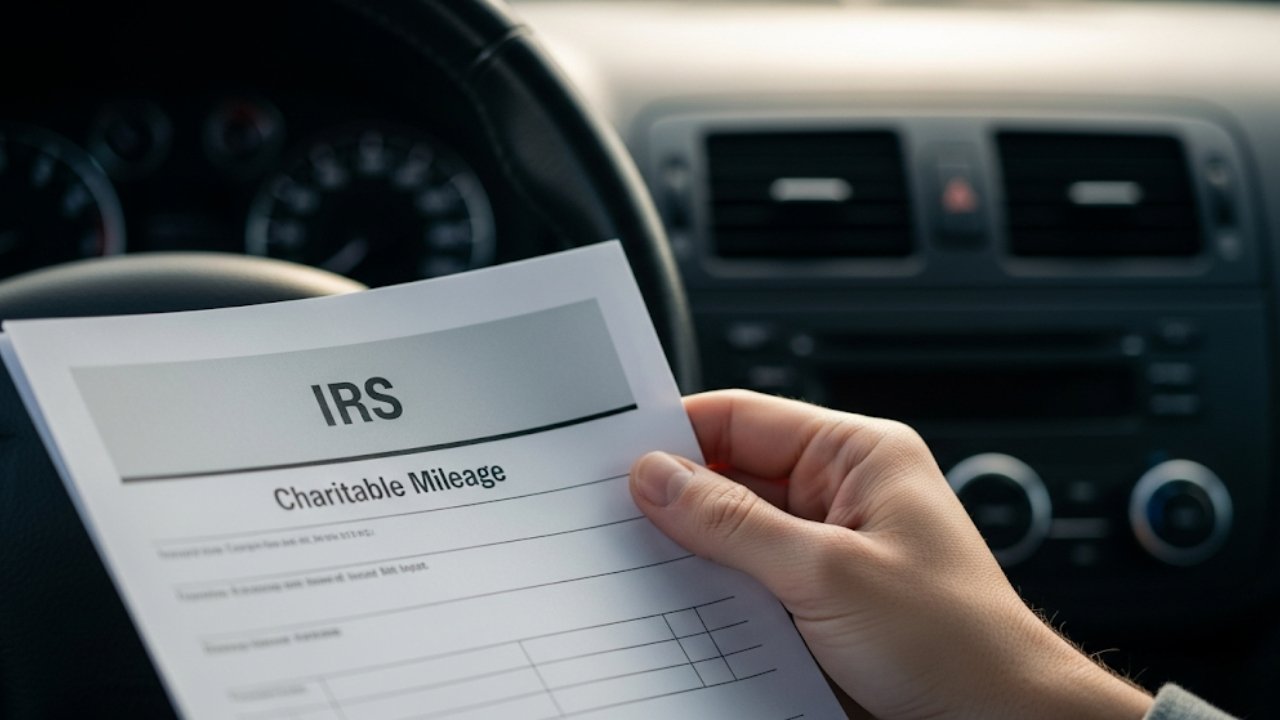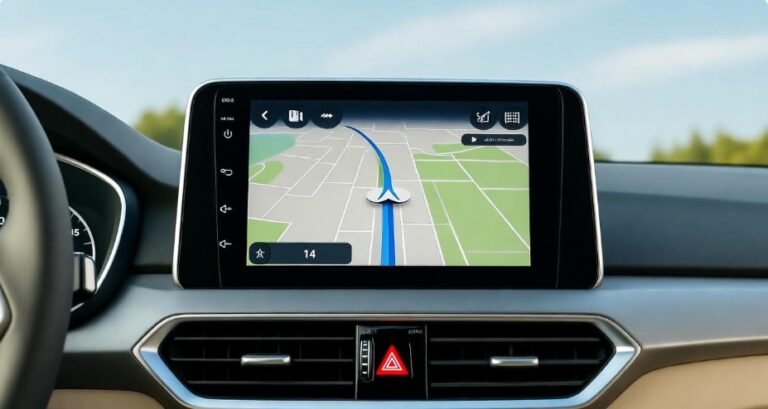How Much Can Manuel Deduct as a Charitable Contribution for Driving 400 Miles in 2025?

Imagine this. You’re sipping your morning coffee, sorting through tax documents, and suddenly wonder, “Wait… I did volunteer work last year and drove quite a bit for it. Can I deduct that?” That’s exactly where Manuel found himself.
In 2022, Manuel drove his car 400 miles to perform volunteer work. He didn’t save gas receipts or oil change records. But he still wants to know—how much can he deduct as a charitable contribution on his Schedule A (Form 1040), itemized deductions?
If that’s you—or might be you someday—you’re in the right place. This guide explains everything in plain English. No complex tax jargon. No confusing IRS lingo. Just real talk with real answers.
Manuel’s Situation: The Key Details You Should Know
Here’s what we know:
-
Manuel drove 400 miles in 2022
-
The purpose was volunteer work
-
He did not keep actual gas or oil cost records
-
He wants to know how much he can deduct on his Schedule A (Form 1040)
Sounds simple enough, right? But the IRS has rules. And these rules matter—because making a mistake on your return can cost you.
The good news? Even without receipts, Manuel can still claim a deduction—and you can too if you’re in a similar boat.
The IRS and Charitable Mileage: What They Really Allow

-
Actual Expenses – Track receipts for gas, oil, repairs, etc.
-
Standard Mileage Rate – Use the IRS-approved rate per mile.
Since Manuel didn’t track expenses, he can’t go with Option 1. So, the only choice left is the standard mileage rate.
What Was the Charitable Mileage Rate in 2022?
The IRS sets the charitable standard mileage rate each year. But here’s the twist: Unlike business mileage, the charitable rate doesn’t change mid-year.
In 2022, the charitable mileage rate was 14 cents per mile. Yes—just $0.14/mile.
Here’s the math:
| Miles Driven | Standard Rate | Total Deduction |
|---|---|---|
| 400 miles | $0.14 per mile | $56.00 |
So, even without receipts, Manuel can deduct $56 as a charitable contribution on Schedule A (Form 1040).
Why Only 14 Cents per Mile? That Feels Low!
You might think, “But gas was expensive in 2022! Why only 14 cents?”
Here’s the thing: The charitable mileage rate is set by Congress, not the IRS. Unlike business or medical mileage, which gets adjusted based on fuel prices, charitable mileage hasn’t changed in years.
It’s fixed. So, even if gas hits $6 a gallon, the rate stays the same.
That means Manuel—like anyone else doing unpaid charity driving—only gets 14 cents per mile in tax deduction, no matter how high fuel costs went.
What Makes Volunteer Driving Deductible?
Not all driving counts. The IRS has strict guidelines on what qualifies as charitable mileage.
To claim a deduction, you must:
-
Drive for a qualified 501(c)(3) organization
-
Perform services without getting paid
-
Keep track of miles driven (date, purpose, miles)
-
Not have received any reimbursement
Here’s what counts:
✅ Driving to a soup kitchen to volunteer
✅ Delivering meals for a nonprofit
✅ Transporting supplies for a charity event
Here’s what doesn’t:
❌ Driving your neighbor to the hospital (even if unpaid)
❌ Picking up food for a friend’s GoFundMe campaign
❌ Any driving where you’re compensated
In Manuel’s case, if he drove 400 miles directly related to helping a qualified nonprofit, that deduction is solid—even without expense records.
No Receipts? Here’s What You Still Need
Even if you don’t have receipts for gas, you’re not totally off the hook. The IRS expects you to prove your miles if they ever ask.
Here’s what you should keep in your records:
-
Dates of the trips
-
Name of the charity
-
Purpose of the trip
-
Mileage (starting and ending odometer readings are a plus)
You can log this in a notebook, a spreadsheet, or even a mileage-tracking app.
So if Manuel didn’t record his miles back then, he might need to recreate them now using emails, calendars, or volunteer logs.
Can You Deduct More Than the Mileage?
Great question! The IRS also lets you deduct other out-of-pocket expenses related to volunteering—as long as:
-
They’re directly connected to charity work
-
You weren’t reimbursed
-
You have proof
That includes:
-
Parking fees
-
Tolls
-
Supplies purchased for volunteer work
-
Uniforms (if not suitable for regular wear)
But again—no records, no deduction. Since Manuel didn’t keep records of oil or gas, those don’t count. He’s limited to the standard mileage rate only.
How to Claim the Deduction on Schedule A (Form 1040)
Let’s get practical. To claim his deduction, Manuel must itemize on Schedule A. That means skipping the standard deduction.
He’ll report the $56 under “Gifts to Charity”, in the section for cash and non-cash contributions.
Pro Tip:
There’s no need to attach proof to the return. But keep your documentation in case of an audit.
If you use tax software, just enter the charitable mileage total when prompted under “charitable donations.”
A Closer Look: Volunteer Deduction Limits
There’s one more twist.
Charitable contributions—mileage or cash—are limited to a certain percentage of your Adjusted Gross Income (AGI).
In general:
-
Cash donations: Up to 60% of AGI
-
Non-cash (like mileage): Often up to 50% of AGI
But let’s be honest—$56 isn’t likely to hit any limits unless Manuel’s AGI is under $120.
Still, it’s worth knowing.
Summary: What Can Manuel Deduct?
Here’s the simple takeaway.
Because:
-
Manuel drove 400 miles
-
The purpose was volunteering for a qualified charity
-
He didn’t keep receipts for gas or oil
He can still deduct $56 on Schedule A (Form 1040) using the standard charitable mileage rate of $0.14/mile.
That’s it. No guessing. No overthinking. Just clean, honest deduction.
How to Track Volunteer Mileage Like a Pro (Even If You Forget Sometimes)
Let’s face it—we’re all busy. When you’re running from one volunteer job to another, remembering to log your mileage might not be top of mind. But the IRS won’t care if you just “remember” you drove 400 miles. They want proof.
Here are simple and practical ways to track your charitable mileage:
️ Tools You Can Use
-
Mileage Log Apps (like MileIQ, Everlance, or Stride)
-
A simple Google Sheet or Excel spreadsheet
-
A physical notebook in your glove compartment
-
Sync with your Google Calendar to trace past activities
-
Use maps to retrace travel (e.g., Google Maps timeline)
Even if Manuel forgot to log his trips at the time, he could reconstruct them using emails, texts from the charity, or location data.
What the IRS Loves to See:
-
Date of each trip
-
Name and location of the charity
-
Purpose of the travel
-
Start and end mileage (if available)
-
Total miles driven per trip
It doesn’t have to be fancy. It just has to be consistent.
Common Mistakes That Can Cost You the Deduction
Unfortunately, a lot of folks miss out on the full benefit of their charitable mileage deduction because of small errors.
Here are the most common mistakes:
| Mistake | Why It’s a Problem |
|---|---|
| Not documenting miles | You won’t survive an audit |
| Assuming all volunteer work counts | Only qualified charities count |
| Using business mileage rates | You must use the charitable rate (14¢) |
| Claiming round trips without purpose | Miles must relate directly to the charitable service |
| Forgetting to itemize | No deduction unless you file Schedule A |
Manuel’s clean approach—400 miles for clear, unpaid volunteer work—is exactly how it should be done (minus the missing log, but we’ve got ways to fix that).
Can You Combine Mileage with Other Donations?
Absolutely! That’s where things get interesting.
Say Manuel donated $200 in cash to the same charity in 2022. He could claim both:
-
$200 as a cash donation
-
$56 for charitable mileage (400 miles × 14¢)
That would give him a total deduction of $256 under “Gifts to Charity” on his Schedule A.
Just Be Careful:
You must keep receipts or letters for cash donations of $250 or more. Mileage logs don’t count for cash contributions.
So combining mileage and monetary gifts can maximize your deductions—as long as everything is well documented.
What If the Charity Reimburses You?
Here’s a surprise: If you get reimbursed for driving expenses, you can’t claim a deduction for that portion.
For example:
-
You drive 400 miles
-
The charity gives you $56 as reimbursement
-
You can’t deduct that $56, even if you declined the money later
But if you choose not to ask for reimbursement and you pay for gas yourself, you’re free to claim the standard 14¢ per mile deduction—just like Manuel.
When Charitable Mileage is Denied: Real-Life Examples
To bring this home, let’s look at a few situations where people lost their deduction—and why:
❌ Case 1: “I forgot to write it down.”
A woman volunteered at a local shelter twice a week but never logged miles. When audited, she couldn’t prove anything. The IRS denied her $300 deduction.
❌ Case 2: “I helped a friend’s fundraiser.”
One man drove 100 miles helping with a friend’s crowdfunding event. The organization wasn’t a registered 501(c)(3). IRS said: No deduction.
✅ Case 3: “I kept emails, calendars, and logs.”
A volunteer at Habitat for Humanity drove over 1,000 miles. He used Google Calendar, receipts, and mileage logs to support his claim. The IRS accepted everything.
Lesson: Documentation is your best friend.
FAQs: Let’s Answer the Questions Everyone Asks
Q1: What qualifies as a “qualified organization”?
A 501(c)(3) nonprofit is your go-to. Think of churches, food banks, animal shelters, Red Cross, Habitat for Humanity. Always double-check the organization’s tax-exempt status on the IRS Tax Exempt Organization Search.
Q2: Can I claim mileage for driving my kids to charity events?
No. Unless you are directly volunteering, driving your children—even if they’re the volunteers—doesn’t qualify.
Q3: What if I drove but got a ride back?
You can only deduct the miles you actually drove. No deduction for time spent as a passenger.
Q4: Can I use the business mileage rate instead?
Nope. The charitable mileage rate is fixed at 14 cents per mile. You can’t choose a higher one.
Q5: Can I deduct gas if I don’t use the standard mileage rate?
Yes, but only if you track actual expenses (gas, oil, etc.) and can prove them with receipts. Since Manuel didn’t, the standard rate is the only option.
Q6: Do I have to attach proof to my tax return?
No. But keep detailed records for at least 3 years in case the IRS questions your return.
Q7: Can I deduct tolls and parking?
Yes! You can deduct parking fees and tolls in addition to your mileage, if they were directly tied to your charitable driving. But again—you need documentation.
Q8: Do I need written acknowledgment from the charity?
Only if the total value of your mileage + other contributions exceeds $250 for that charity. Then yes, you’ll need a statement from the organization confirming your contribution.
Final Thoughts: The Heart Behind the Miles
When you give your time, your hands, and yes—even your fuel—to help others, it matters. Maybe $56 doesn’t sound like a fortune. But it’s not about the dollars. It’s about doing things right.
And when tax time rolls around, it feels good to know that your service—and the gas it took to get there—counts.
Manuel did it right. He gave without expecting anything. But with a little smart recordkeeping, he was still able to claim a $56 charitable deduction on Schedule A (Form 1040).
You can too. Drive with purpose. Track your miles. And let your generosity shine through—even on your taxes.






